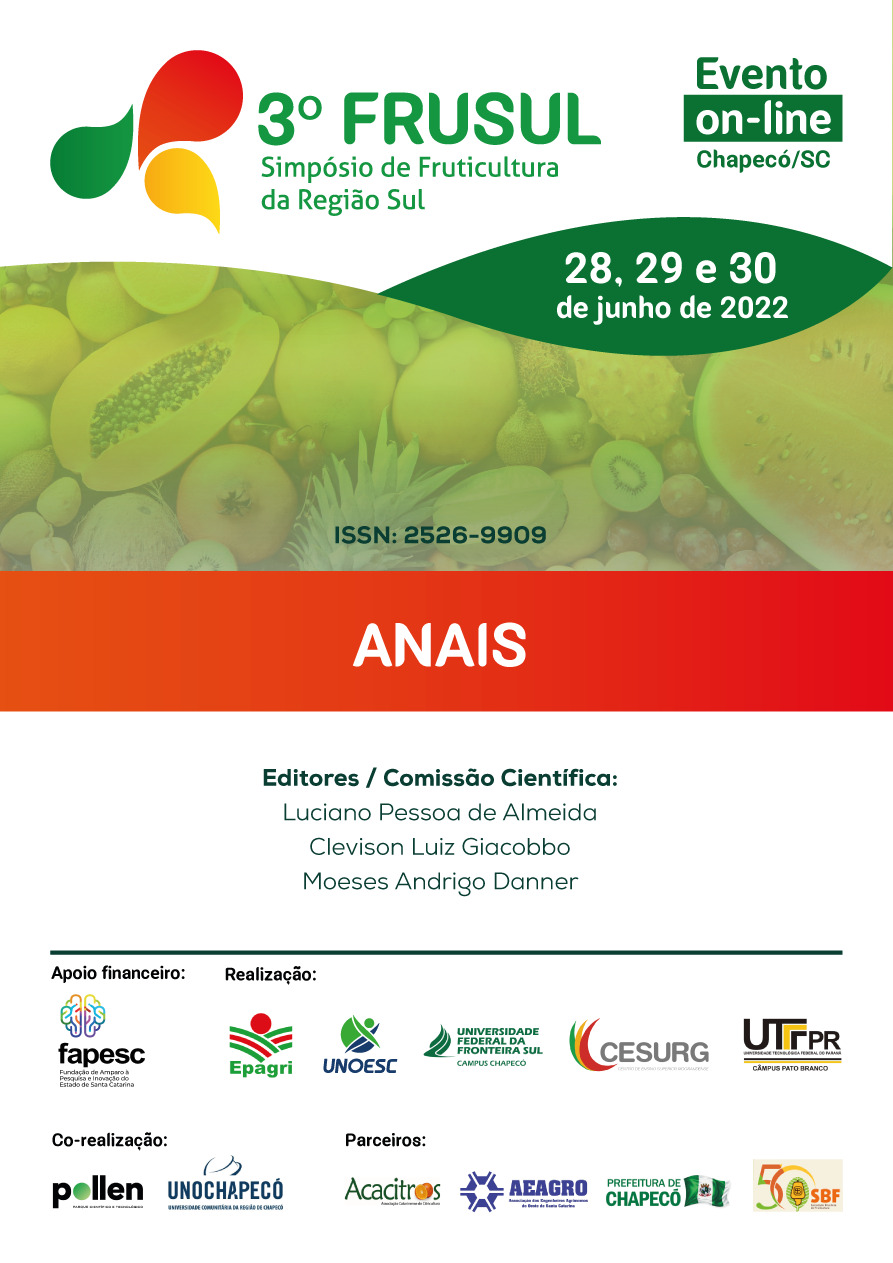Evaluation of ripe grape rot in PIWI selections during physiological maturation in Videira – SC, Brazil
Resumen
Most of the southern regions of Brazil have favorable conditions for the occurrence of diseases, due to the presence of temperature and rain-induced diseases. Genetic breeding has allowed the development of cultivars that carries out resistance alleles to downy mildew and powdery mildew, called PIWI varieties. However, varieties with ripe rot resistance are not yet available. The objective of this work is to evaluate the incidence and severity of ripe grape rot in different PIWI selections. The work was carried out in the experimental stations of Epagri, Videira, SC, with periodic monitoring of average, maximum and minimum air temperature (°C), rainfall (mm) and relative humidity (%). All selections used come from modified backcrossing, with 90% of V. vinifera genome, being Gf.2004-043-0004, Gf.2004-043-0015 and Gf.2004-043-0021. The incidence and severity (in %) of the ripe rot were performed at harvest on five clusters of both two randomly chosen plants, according to a diagrammatic scale of rot in vine clusters. A randomized block design was applied, with data normality and Analysis of Variance (ANOVA). An average temperature of 22.8°C was observed during the evaluations, with a maximum precipitation of approximately 175 mm, and a minimum of 20 mm, and relative humidity always above 75%. There was a different behavior among the PIWI selections in relation to the incidence and severity of ripe rot. Selections Gf.2004-043-0021 and Gf.2004-043-0004 showed lower resistance to ripe rot occurrence, compared to Gf.2004-043-0015, which showed greater resistance to ripe rot occurrence, as well as lower level of severity. Since the latter showed its ability to resist the negative effects, even in favorable conditions to the development of the disease, it could used for breeding purposes. Overall, it is possible to classify Gf.2004-043-0004 as more susceptible, Gf.2004-043-0021 intermediate and Gf.2004-043-0015 less susceptible for both evaluated characteristics.


